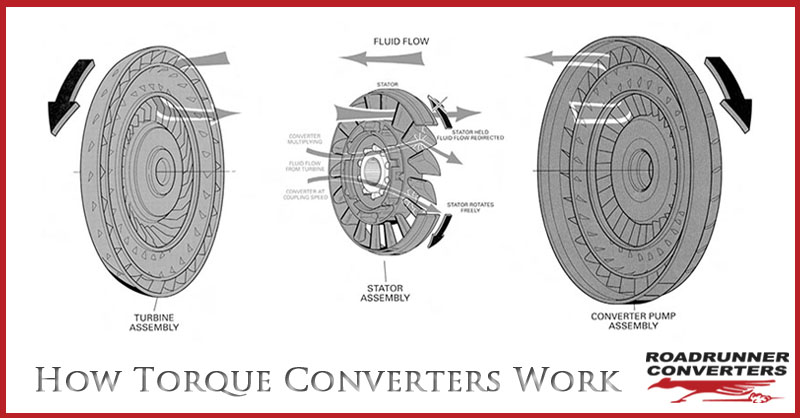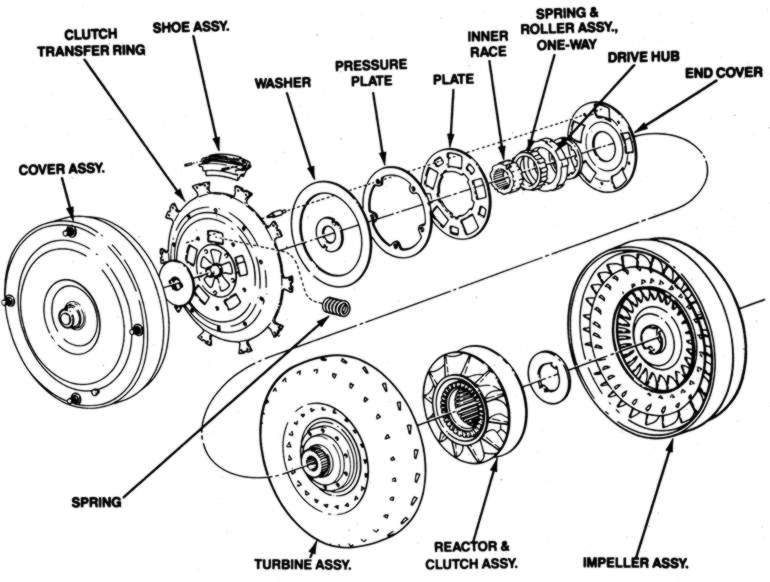Torque converters are complex sealed fluid mechanisms, so it’s rare that you’d see one on the inside. If you do manage to pry it apart, you’ll still have a hard job figuring out how it all works.
Consider two fans across from each other, one facing the other. Turning one of the fans on will force the other to spin because of the air being blown over its blades. It stands to reason that jamming the second fan’s blades in place so it doesn’t spin will have no effect on the first, which will keep on spinning.
Bring this example to a torque converter and you’ll understand how it works.The ‘impeller’ fan, which along with the front cover forms the chassis of the converter, is linked to an electrical engine. The ‘turbine’ fan is linked to the transmission input cylinder. Any movement of the turbine will cause the vehicle to move, unless the transmission has been put to park or neutral.
How Torque Converters Work In Cars
Building on our example of the two fans, the mechanism substitutes air with a compression resisting oil based medium, called the transmission fluid.Cars with an automatic transmission make use of a torque converter; this article will explore why they need to and how it works.
Where a manual transmission vehicle makes use of a clutch, an automatic transmission vehicle substitutes that with a torque converter for the same purpose.
In order for the vehicle to operate it is important that the engine is linked to the rear wheels through such a mechanism that it can be connected so that the vehicle moves or disconnected so that it will stay motionless while the engine runs to provide other functions.Manual vehicles make use of the clutch to link and delink the transmission from the engine, and automatic vehicles use a fluid mechanism like the torque converter sitting in between the transmission and the engine.
Key Torque Converter Components
A torque converter comprises of three key components inside its shell, the Pump, the Turbine, and the Stator that coordinate power transmission from the engine to the transmission.
The centrifugal pump inside the torque converter spins the fluid to the outside, very similar to what a spinning cycle of a washing machine would do. This action of the fluid being flung towards the outside creates a vacuum drawing more fluid towards the center.
When this fluid reaches the turbine, which is linked with the transmission through the middle spline,the blades move causing the transmission to spin, and that in turn moves the vehicle. The turbine uses curved blades to change the direction of the fluid that enters so that it flows through the center of the turbine, and this change in direction enables the turbine to spin.
The fluid leaves the turbine through the center, flowing in a completely different direction to when it entered, and opposite the direction the engine and pump are turning in. If this motion does not occur and the fluid hits the pump, it will slow down the engine and waste power. This is where the third component of the converter, the stator, comes in play.
The stator sits right at the center of the torque converter, redirecting the fluid that returns from the turbine to stop it from hitting the pump again. This action adequately increases the torque converter’s efficiency.
How The Torque Converter Helps
To sum it up, the torque converter is a mechanism that makes use of a fluid medium that enables the engine to independently spin without affecting the transmission. It achieves this by pressurizing the automatic transmission fluid, creating the necessary force to shift transmission gears.
A faulty or worn out converter may prevent efficient pressurization of the fluid, adversely impacting gear operations and function.In the event of a vehicular malfunction, a thorough inspection carried out by a professional is the best approach to isolating the root of the problem and implementing a solution.
Regular tuning and servicing of the converter is advised as it will tremendously enhance the vehicle’s performance, durability and economic value.
Replacement Torque Converters
If you have a car, truck, or suv that has a broken torque converter we can replace it. We can help you choose the best fit and stall speed for your make, model, and year of vehicle. We replace more than worn out or broken torque converters, we also offer high performance torque converters for racing and towing. If you’d like to tow better, get bigger horsepower, or even better miles per gallon, we have the right solution for you. Get in touch with us by calling toll free at 800-994-2301 or contact us by using our contact form








